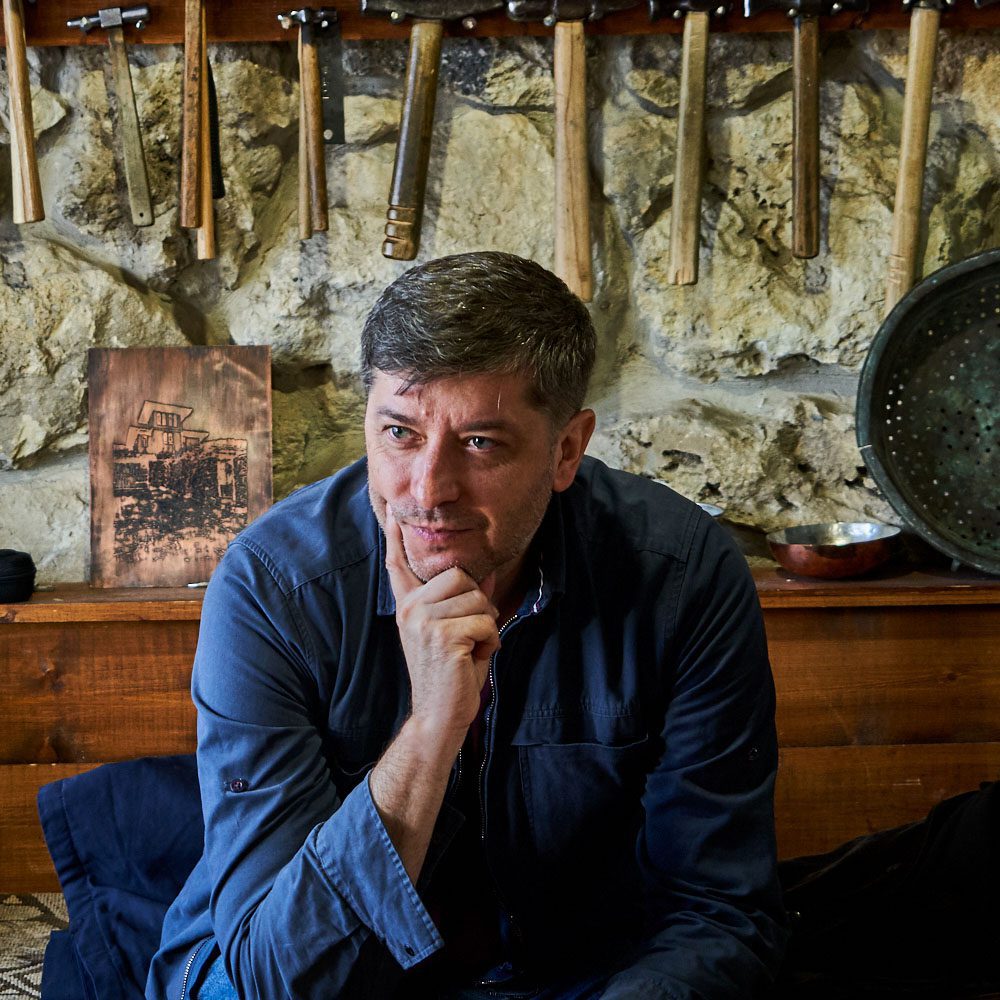
Just ten days ago, peaceful rallies of support for the opposition candidate Sviatlana Tsikhanouskaya – a winner in the last presidential election according to independent observers – were held all over Belarus. However, the Central Election Commission of the Republic of Belarus has ruled that it is Alexander Lukashenko who won the election.
Over the next few days, from Sunday, August 9, the atmosphere of joy gave way to an increasing terror. Internal forces have regularly clashed with protesters who have not accepted the fact that President Lukashenka, who has been in office for 26 years, officially received as much as 80% of the votes. Those scenes – especially the ones that took place on Tuesday and Wednesday, when OMON brutally pacified even small groups of citizens, changed everything for many. According to various sources, seven thousand to eight thousand people were arrested back then.
On Thursday, OMON disappeared from the streets of Minsk and other major cities. Many believe it was due to the protest of women dressed in white and the increasing number of factories that went on strike. And the security forces no longer know how to deal with it. How to treat women standing together? How to calm down the workers – Lukashenka’s allies?
Next days – Thursday, Friday and Saturday – went by in a truly wonderful, victorious atmosphere. When OMON soldiers gathered in a small group, lowered their shields in front of the government headquarters at Independence Square in Minsk, or even they allowed people to kiss and hug them and weave the flowers into their shields, the question was asked – is it already finished? Is this that moment – the picture so representative for many revolutions – when government forces take side with the protesters? After all, all these single pictures – a woman walking with flowers to a policeman dressed in an armoured uniform – are critical moments for any revolution as the revolutions are developed mainly through gestures, symbols and emotions.
Still, when for example a balloon explodes among those gathered around the government buildings, everyone turns around nervously. When a black van or a military truck drives through the streets, people stop cheerful conversations in the restaurants.
Yes, there are joyful gatherings in the streets of many Belarusian cities.
No, nobody knows what is going to happen next.
On the one hand, Interior Minister apologizes awkwardly for the acts of aggression and violence. On the other hand, there is information about Lukashenka’s conversation with Putin.
So we have many unknowns. There are no opposition leaders, but there is an authoritarian leader who said ten days before the elections that he could not imagine losing elections: “How would I live, what would I do?” And there is Russia, which has no intention and cannot afford to “lose” another brother nation. At this point, we can agree with those who say: “It is not a revolution, because the change of power has not happened (yet)” or “it is doomed to failure”.
Some consider the events in Belarus only in terms of the geopolitical chessboard: 10 million people and black and white chess pieces of global policy. The human rights and aspirations of society itself are irrelevant because there is a higher political deal.
However, leaving it all aside, another picture will emerge, which allows us to describe these events precisely in terms of a revolution. It is about the changes taking place in the minds of Belarusian people.
Let’s take a look at those last days before we get to know what is going to happen next. Tsikhanouskaya’s departure to Lithuania, forced by the government services, did not stop the protesters. Everyone knows why it happened. But it is also not a typical, hierarchical protest, based on some form of an institution. Arguably, it could be said that from the authorities’ point of view – the ones that try to maintain control at all costs – it is the worst of the protests because there is no leader. When one source of protest is broken, more appear.
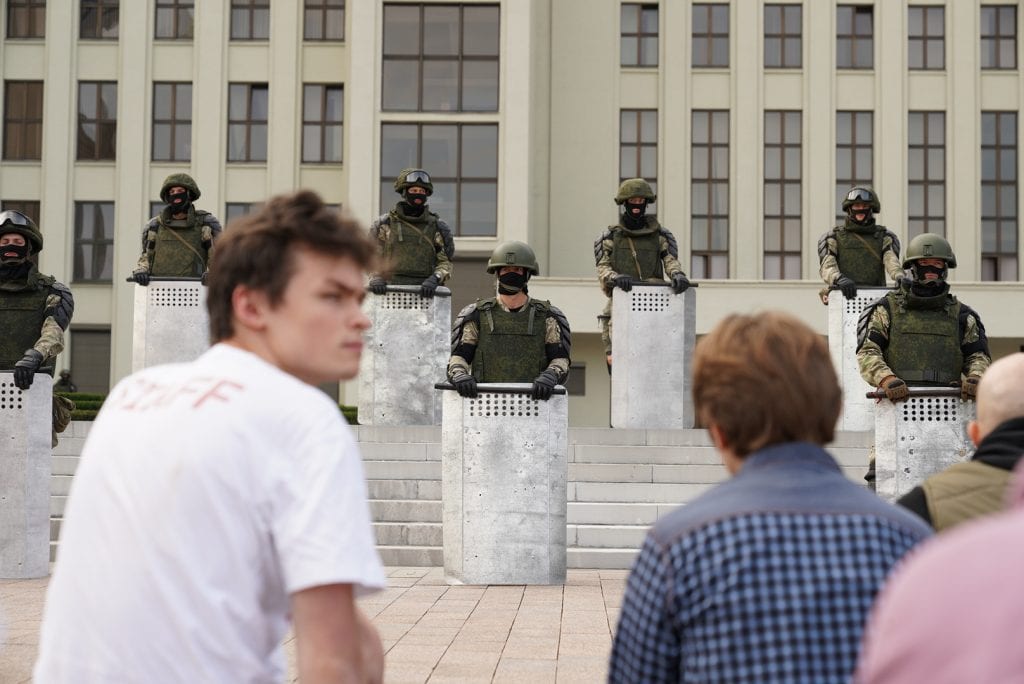
A desire for change and the awareness that their voice is important
Voters united themselves around Sviatlana Tsikhanouskaya because of the actions of the authorities eliminating independent candidates.
People don’t want their voice to be taken away. Even before the elections, during the campaign, it was clear that this time it would be different. Belarusians are ready to defend their choice.
According to the protesters, the election was rigged. On August 9, the Central Election Commission of the Republic of Belarus announced that 41,7% of voters voted during the early voting between 4 and 8 of August. It is a result not seen before and that type of voting, in the absence of adequate independent monitoring, gives an excellent opportunity to rig the voting results.
When polling stations were closed at 8 pm, the Belarusian state television presented the official exit poll results, according to which 79.7% of votes were in favour of the incumbent president and 6.8% of votes were in favour of the independent candidate Sviatlana Tsikhanouskaya.
The wife of Valery Tsepkalo – a candidate in the presidential election who was barred from running in it – was Sviatlana Tsikhanouskaya’s member of the election staff. But she left Belarus during the election day for fear of arrest.
On August 10, the Central Election Commission of the Republic of Belarus informed about the preliminary results of the elections: Alexander Lukashenko – 80.08%, Sviatlana Tsikhanouskaya – 10.09%. On August 14, the final results were announced: Lukashenko – 80.1%, Tsikhanouskaya – 10.1%.
Since the beginning, the Belarusians who took part in the elections have found it hard to believe in such results.
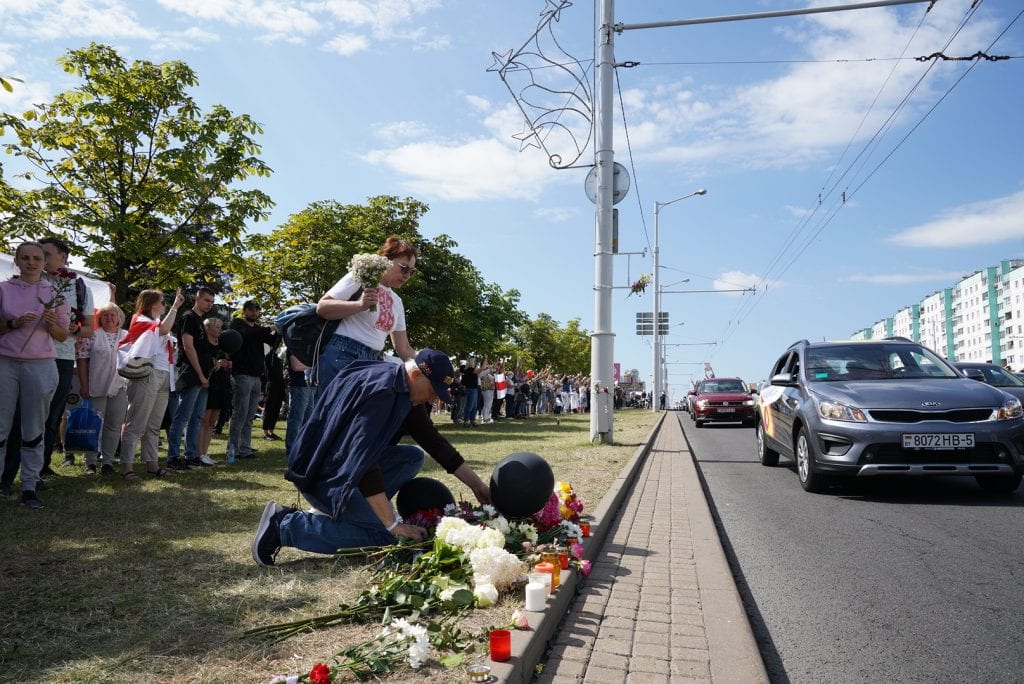
Protests and self-organization
Even before the elections, Telegram social network independent channels published tips on how to behave and what to take while going to the protests. And above all, a simple plan was prepared: first, try to gather around your electoral commissions and demand posting the results. Then go to a protest in the centre of Minsk and the central squares and streets of other cities.
It is all happening in the absence of leaders and organized opposition structures to support the protests. Nevertheless, people go to the streets. Clashes broke out quickly, and OMON troops were sent against the protesters. Rubber bullets, stun grenades and gas grenades were used. As a result of OMON actions, some people were injured. Clashes continued until late at night. There were sounds of massive explosions and gunshots from various parts of the Belarusian capital.
The Belarusian authorities shut down the Internet, believing it to be one of the central mobilization and coordination tools for protesters. The day after the elections, people gather again in the streets of the cities. There are clashes.
The following days prove that Belarusians can self-organize without leaders and a typical coordinating centre (that function is taken over in a way by independent Telegram channels). Security forces are trying to move protesters as far as possible from the city centre, which is blocked in the early evening.
Protests are often spontaneous and spread to districts far from the centre. OMON and soldiers of the internal troops brutally pacify peaceful protests.
The protesters respond to OMON brutality with various new forms of activity and self-help. People form columns of vehicles and try to block the streets. Car horns are used, which is a sign of support for the protests.
People living in blocks of flats near the places of clashes open the doors to their staircases. You can often see people waiting there and holding the doors open. All this to provide shelter for people fleeing from OMON (people on Telegram channels also publish codes for digital locks in entry phone systems giving specific addresses of homes).
However, it is not everything. Since the very beginning of protests, people were calling for a general strike across the country. At first, it seemed unsuccessful, but as the days have gone by, more and more employees of the state-owned facilities were joining the protest. It must have been something to worry about for the authorities.
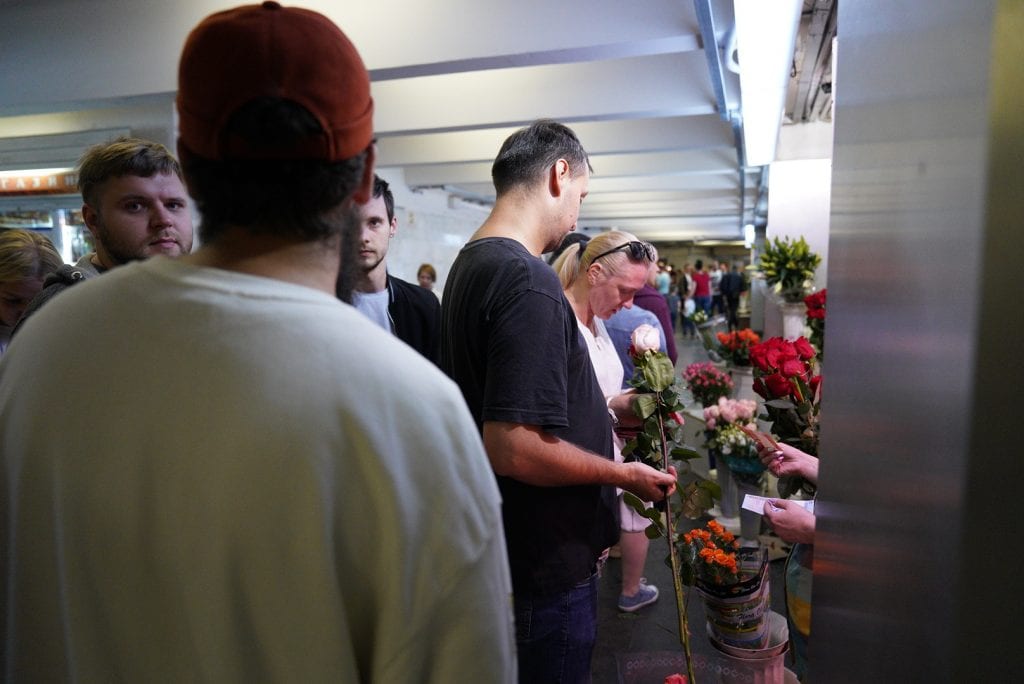
Belief in change. It means victory
The attempt to intimidate the society and thus to break the resistance fails. The Belarusian authorities are also unable to shut down the Internet for good as it generates an economic loss. Some companies operating primarily online are starting to think about relocating their business to neighbouring countries.
Anyway, the Internet shutdown, which was partially avoided, did not affect the mobilization of the protesters. After a few days of clashes with OMON, people believed they were able to resist even such brutal actions. Determination increased, and faith in victory emerged. Many explain that they took to the streets because of unpunished violence against ordinary people. During several days of protests, approx. seven thousand people were arrested. When the authorities decided to release them, there were numerous reports of tortures in detention centres. It sparked even greater anger and resistance in an active part of society.
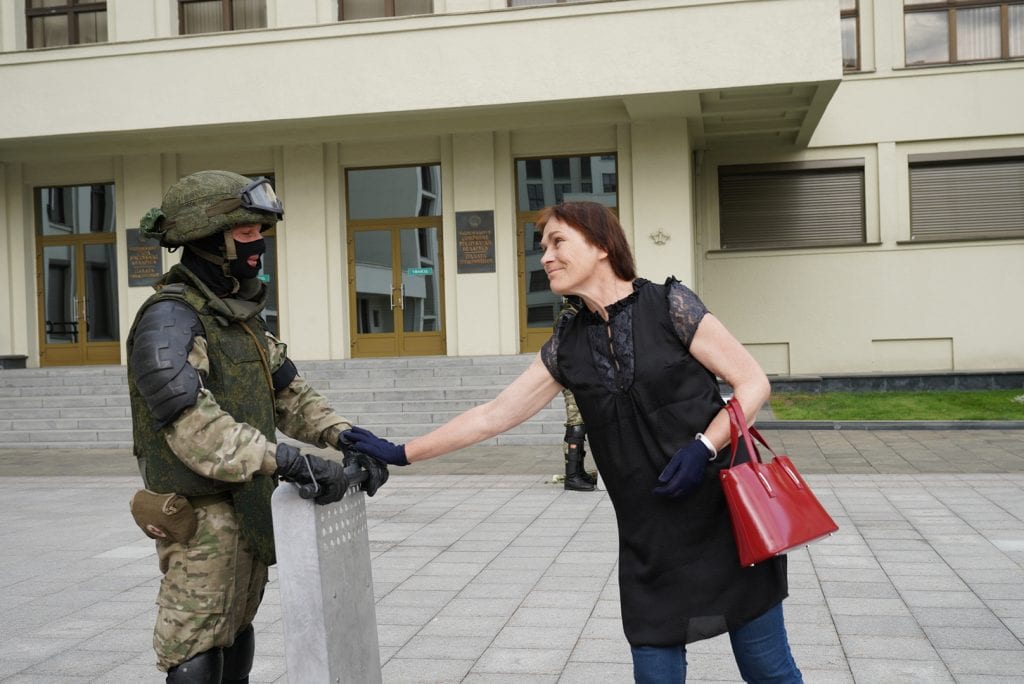
Is there a revolution going on in Belarus?
Many experts say that events in Belarus cannot be described in terms of a revolution. Indeed, even the protesters themselves do not use that term. But last week has brought revolutionary changes in Belarusians’ minds. Or at least it seems like that. It’s not just about people’s fatigue of authorities anymore. It’s an active attitude towards the crucial shift.
It is challenging to forecast today the course of events. Still, we can talk about an essential moment of consciousness changes and a new benchmark for modern national identity and building a civil society.
—
Authors: Piotr Andrusieczko and Jakub Górnicki
Photos: Marcin Suder
